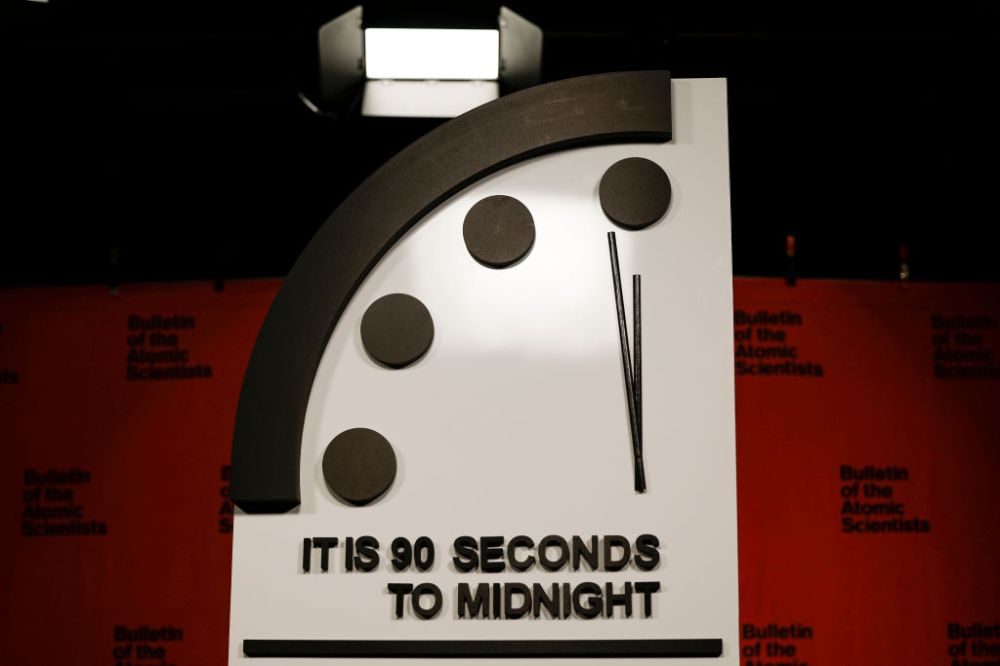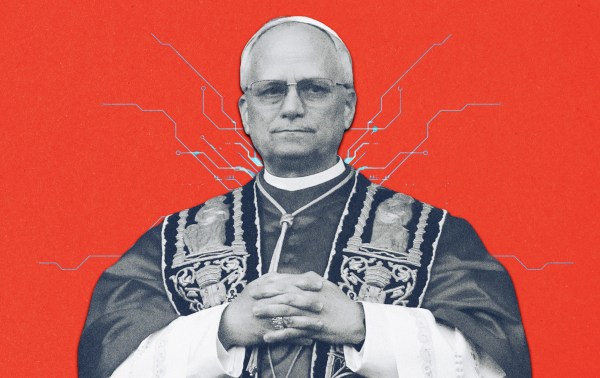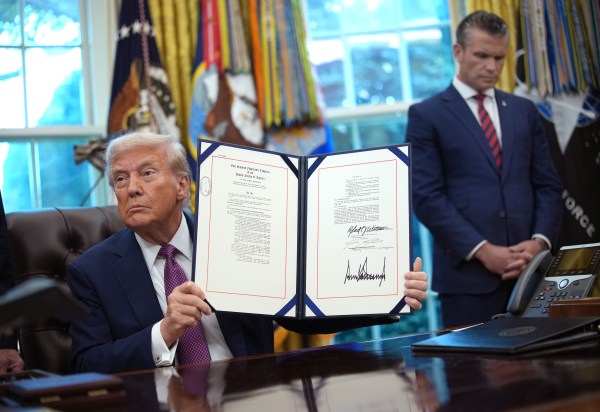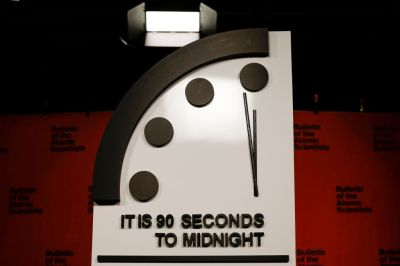Dear Reader (Or should I say “The Readers I hold dear”?)
Question for you: What are the most successful publicity stunts in history? If you Google around asking various versions of this question, the results are pretty disappointing. I mean, they’re interesting. I was particularly intrigued by the failed McWhopper campaign, which I had completely forgotten about.
But none of that is what I had in mind. I’m thinking of what Daniel Boorstin dubbed “pseudo-events,” which he defined as events “produced by a communicator with the sole purpose of generating media attention and publicity.” A pseudo-event is “not spontaneous, but comes about because someone has planned, planted, or incited it.” And their “immediate purpose” is to be reported or reproduced by the media.
I think we increasingly live in a kind of pseudo-reality—and I’m not talking about VR stuff—because so much of what we talk and argue about takes place in a kind of digital funhouse of mirrors. Basically, whole ecosystems of pseudo-events ping off of other pseudo-events and commentary about reactions and pseudo-reactions to reactions of other people’s reactions. Our screens are the digital walls of Plato’s cave.
“We are haunted,” Boorstin wrote in 1960, “not by reality, but by those images we have put in place of reality.”
Just imagine what Boorstin would make of the Very Online World of today where masses of human beings think that tweets and cable news monologues are news and that serious people have an obligation not only to take them seriously, but take sides on them.
Okay, with that out of the way, let us now consider the answer to my own question. What is the most successful pseudo-event since the invention of the radio, if not the printing press?
I nominate the Doomsday Clock.
For those who don’t know, the Bulletin of the Atomic Scientists has been staging Very Serious and Scary press conferences announcing that scientists have moved the clock forward—or occasionally backward—toward “midnight” since 1947. It was originally created by some Manhattan Project alumni in an effort to assuage their guilt or warn the world about the dangers of nuclear proliferation (or both). It was initially set at “seven minutes to midnight,” with midnight representing the total annihilation of civilization—and perhaps all biological life—that would come with global thermonuclear war.
Since then, the Doomsday Clock-keepers have been moving the minute hand forward, and occasionally backward, based upon their best guess about how close we are to being burned to a cinder. And the media has treated it as major news ever since, including last week.
Here are some recent headlines:
The New York Times: Doomsday Clock Moves Closer to Midnight Than Ever
I could go on, but you get the point.
Give credit where it’s due: This is an amazingly successful public relations stunt. It is very difficult for any advocacy group to get this kind of coverage at all. But it is infinitely more difficult to get media outlets to credit the opinion of such groups as objectively authoritative. Getting this kind of fawning, deferential coverage for 76 years makes the marketing mavens and Michael Scarns at the Bulletin of the Atomic Scientists arguably the GOAT of spin.
Blinded by “science.”
So here’s the first problem. There’s nothing particularly “scientific” about the clock. There’s no complicated risk-assessment algorithm or anything resembling the scientific method involved. It’s just a bunch of experts expressing an opinion and boiling it down to a dopey clock intended to scare the bejeebus out of people.
More on that in a bit. But let’s pretend—the way so many people do—that the clock is scientific. Let’s assume that it’s just a bunch of nuclear physicists and biologists rendering their dispassionate scientific judgment to the best of their ability.
Who gives a rat’s ass?
Don’t get me wrong, it’s a reasonable question: Are scientists the best people to tell us how close we are to the end of life on Earth?
The answer: It depends!
If there’s a meteor barreling toward Earth and, for some bizarre reason, I’m the president of the world government, I’ll want to hear from the guys and gals with the graphing calculators. If there’s an extinction-level event brewing, be it a pandemic or a caldera full of magma, I’ll want to hear from the guys in the lab coats. If some artificially intelligent supercomputer went all Skynet on us, I’d convene a meeting of as many computer scientists as I could fit in my lavish throne room and listen intently from the vantage point of my skull throne. Even if they persuaded me, I wouldn’t necessarily want to put them in charge of the response, but I’d definitely want their advice about how to respond.
But physicists, biologists, volcanologists, and computer scientists aren’t much use in telling me whether—or when!—Vladimir Putin will use a nuclear weapon, and they’re even less useful in telling me how the world will respond. I might buy what they’re selling on more sciency topics like climate change, but that doesn’t mean I have to accept their remedies, because climatologists have no special expertise in statecraft or economics. The scientists can tell me that Godzilla is coming, but I’m gonna want some input from the generals about how to stop him.
Indeed, as is often the case with very smart people, their advice may be counterproductive because really smart experts often don’t understand that they’re not experts about stuff they’re not experts on.
But again, the Doomsday Clock isn’t really about science. And to their credit, the people behind it often admit as much. They concede it’s just a metaphor. “It’s not a model spitting out a number. It’s a judgment among experts about whether humanity is safer or at greater risk,” Rachel Bronson, the president of the Bulletin, told the Washington Post. And to the limited credit of many reporters, this is often grudgingly acknowledged. But there’s no such nuance in the visual metaphor they hype. Most reporters split the difference by noting that while the clock is a metaphor, the metaphor is backed up by science. And it’s not. Sure, you could say it’s got some political science behind it. But just imagine how the Doomsday Clock would be treated if it was a product of the Bulletin of the Political Scientists.
In other words, the Bulletin of the Atomic Scientists in general, and their science security board in particular (which sets the clock), are simply offering political judgments based on their political priors. And their political priors are to scare the stuffing out of people into believing their proposed remedies are the only way to avoid annihilation.
The Bulletin of the Atomic Scientists is basically a non-profit think tank that puts out a journal. Bronson, the president of the Bulletin, is a political scientist. The editor-in-chief is a journalist who used to be the editor-in-chief of Pacific Standard and before that High Country News. The executive editor is also a journalist, though he does have a masters in science writing. The editor of biosecurity, also a journalist, used to cover the White House for Japanese public television.
Now, that clock-setting board does have some real scientists on it. And it has some real area experts who aren’t scientists. It also has some people who are neither. The executive chair of the board is none other than former Democratic California Gov. Jerry “Moonbeam” Brown. Love him or hate him, I feel no compulsion to take him any more seriously on these issues than anyone else.
Again, there are some smart and serious people behind the clock, and they are perfectly entitled to render an opinion about the threat of nuclear war (and now climate change, which they added a while back). But so is everybody else. And if the Brookings Institution or Major League Baseball held an annual event proclaiming that the end is nigh or humanity is in the bottom of the Ninth, the media coverage wouldn’t lend these pronouncements an air of scientific infallibility.
But the Bulletin, despite its concessions to metaphorical guesswork, is happy to fall back on appeals to its own authority, like Bill Murray in Ghostbusters. “Back off man, I’m a scientist.”
SANE frozen clock.
Which brings me to my second gripe. Since its inception, the Doomsday Clock has been used as a cudgel against anyone not wholly bought into various arms control doctrines and various peacenik pieties. Ronald Reagan had the Doomsday Clock thrown in his face all the time, the implication being that “scientists” had a better understanding of arms control and the arms race than he and his administration did. Maybe they did (spoiler: they didn’t), but their opposition wasn’t a scientific judgment, it was a difference of opinion.
Here’s a snippet from an AP story in 1981 that gives you a sense of how scientific their calculations are:
The scientists said the election of Ronald Reagan and a conservative Congress was not, in itself, a factor in moving the clock ahead. The disturbing factor was that several congressmen with strong stances on arms control lost, they added.
In 2017, two members of the Bulletin penned an op-ed for the New York Times titled, “Thanks to Trump, the Doomsday Clock Advances Toward Midnight.” A few paragraphs in, the authors concede, “We understand that Mr. Trump has been in office only days, that many of his cabinet nominees are awaiting confirmation and that he has had little time to take official action.”
Around the same time, the Washington Post offered this headline on a news story: “The Doomsday Clock just advanced, ‘thanks to Trump’: It’s now just 2½ minutes to ‘midnight.’” The Post informed us that “It's now 2 ½ minutes to ‘midnight,’ according to the Bulletin of Atomic Scientists, which warned Thursday that the end of humanity may be near.” (The article was written by three reporters, which makes me wonder how many people it takes to basically rehash a press release and a press conference.)
Further down, the Post reported:
Rachel Bronson, the Bulletin's executive director and publisher, said threats such as climate change are being compounded by “a growing disregard for scientific expertise.”
“There is a troubling propensity to discount, or outright reject, expert advice related to international security, including the conclusions of intelligence experts,” she said. “The board concludes in no uncertain terms that words matter in ensuring the safety and security of our planet.”
Obviously, I’m no fan of Trump, but citing the Doomsday Clock as if it’s some independent instrumental reading that they’re reporting on, rather than a metaphorical doohickey they adjust to justify their beef with Trump, is goofy. At 10:00 p.m. I can move the clock hand to 2:00 a.m. and tell my daughter it’s time to go to bed. But that’s not how it works.
Still, Bronson is right—words matter. But maybe one of the reasons there’s a “troubling propensity to discount, or outright reject, “expert advice” is that the experts think we’re easily manipulated idiots.
Highbrow fearmongers.
Which brings me to my final point: They’re just wrong—about all of it.
While I’m tempted to rehash Cold War arguments about deterrence and the like, let me make the same point in the current context. Last week, for the first time, the Doomsday Clockers issued their report in Russian and Ukrainian. They moved the clock forward because of the Russian invasion, and while the clocksters are not supportive of Putin’s crimes, they are nonetheless providing useful propaganda for him. It is Russia, and Russia alone, that insists this war could force the Russians to use nuclear weapons. It’s a threat they invoke constantly to shake Western resolve. If people believe Russia and Vladimir Putin lack agency to stop the war, they calculate, NATO and Ukraine will cave to the inevitability of Russian victory.
It’s no surprise, then, that the Kremlin responded to the report with great seriousness, because Russia wants everyone to be terrified of nuclear war, and the Bulletin of the Atomic Scientists gave them a huge P.R. coup by lending “scientific” credibility to their threats. Of course, Russia blamed America and NATO for the increased risk, because it is a staple of Russian propaganda that they’ve done nothing wrong and that it’s NATO and Ukraine that are being “provocative” for not taking the position that the rape victim should just lay back and take it. They remind me of Gandhi’s advice to Great Britain to simply surrender to the Nazis, because his whole “violence never solved anything” pacifism was aimed only at the West, not at his “friend” Adolf Hitler.
This has been the role of the Bulletin for 70 years, to pressure Western leaders to pursue the Bulletin’s arms control priorities. Whatever you make of that project, it’s just an ideological argument masquerading as science.
But the wrongness continues.
Look, contrary to popular opinion, I’m no expert on the science of probability. But if I told you—with scientific certainty—that your car was somewhere between 17 minutes and 90 seconds from stalling out, after a few hours of driving you might start to doubt my automotive expertise. If you drove the car for another 76 years, you’d think I was a moron or, maybe, trying to sell you a new car (we’d both also be very old). Moreover, I might revisit my understanding of how cars work or what probability means. But when it comes to the clock setters, their formula is always right.
Defenders of the Doomsday Clock say I’m missing the point. They’re simply warning us about the dangers we face. Some might even say that such warnings helped to prevent calamity. Eh, maybe. But does anybody at this point really need to be told that nuclear war would be bad? Are we not doing enough to fight climate change for a lack of media attention? Basically, all environmental reporting today is climate change reporting.
Meanwhile, telling generations of Americans that global annihilation or climate catastrophe is just moments away is not constructive. It’s probably not a major reason why many people don’t want kids, but I don’t think such alarmism plays a trivial role either.
We hear a lot about how Fox News and other right-wing media outlets have been monetizing fear. I think there’s a lot of truth to that. But the Doomsday Clock was there first and the supposedly sober and responsible media has been boosting these pseudo-events for three-quarters of a century. Whole generations of Americans were terrified of nuclear war thanks precisely to the fearmongering symbolized by that dopey clock.
Indeed, the Doomsday Clock didn’t merely give the media an opportunity to privilege arguments it likes and incite elite opinion to bully wayward policymakers. “It has permeated not only the media landscape but also culture itself. The Doomsday Clock appears in novels by Stephen King and Piers Anthony, songs by the Who and the Clash, and comics like Watchmen and Stormwatch.” That’s not me talking. That quote is from the ad on the Bulletin’s website hawking its fancy coffee table book, The Doomsday Clock at 75, which you can get for $100 or four interest free payments of $25.
Various & Sundry
Canine update: Generally all is fine, except for this now codified spaniel rage issue. At bedtime, Pippa is the first to the human bed, and she becomes a snarling hellhound when Zoë tries to join us. No amount of yelling or smacks from me seems to deter her. I have to say, I’m a little proud of Pippa for standing up for herself after nine years of being pushed around by the Dingo and a little freaked out that Pippa has any capacity for aggression at all. But I’m even more proud of Zoë for not taking the bait and tearing the stuffing out of Pippa for her effrontery. (Zoë is definitely mellowing in her old age, though she still has gas in the tank.) But my biggest feeling is sympathy for poor Zoë, because by taking the higher road she ends up sleeping alone at night. I’m also concerned that Pippa will take the wrong lessons and press her luck one time too many. What’s weird is that the moment Pippa gets down from the bed, they're buddies again. If anyone has advice about how to deal with this, please drop me a line. In other news, Pippa feels very bad about getting the day of the week wrong while tensions between Gracie and Chester remain high. Though we will not be creating a feline Doomsday Clock.
ICYMI
And now, the weird stuff







Please note that we at The Dispatch hold ourselves, our work, and our commenters to a higher standard than other places on the internet. We welcome comments that foster genuine debate or discussion—including comments critical of us or our work—but responses that include ad hominem attacks on fellow Dispatch members or are intended to stoke fear and anger may be moderated.
With your membership, you only have the ability to comment on The Morning Dispatch articles. Consider upgrading to join the conversation everywhere.